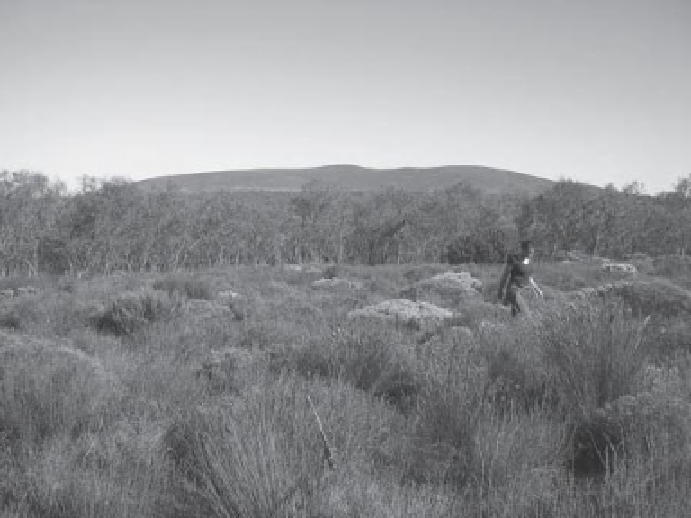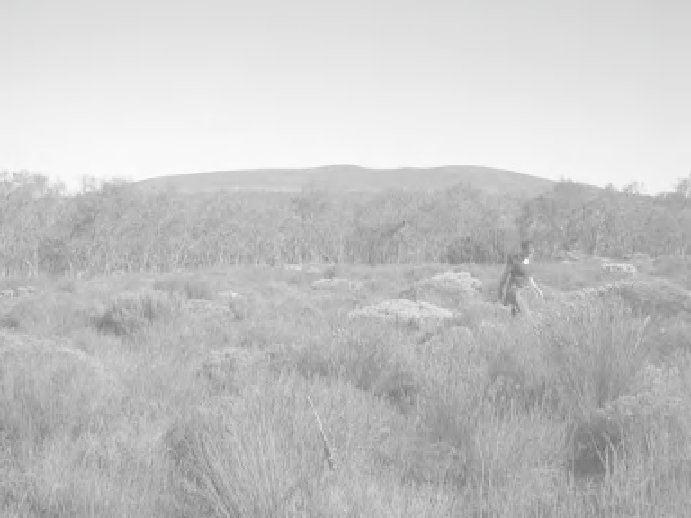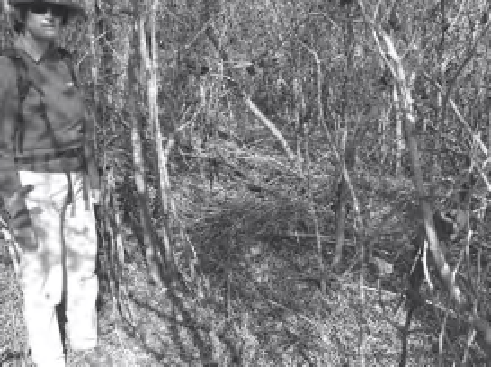Environmental Engineering Reference
In-Depth Information
and functional changes to biotic and abiotic compo-
nents cause positive feedback loops (e.g. increased soil
nutrient levels lead to enhanced growth of
Acacia
species, and high biomass of
Acacia
leads to fi res of
high severity that promote
Acacia
recruitment), and a
third threshold is reached:
Acacia
forms monoculture
stands that suppress growth of all but the most com-
petitive native and other alien nitrophilous species
(Figure 20.4). The latter species form an understorey
that may carry near-annual fi res.
Acacia
control at this
stage results in an
alternative stable state
: grass and
alien annual dominance. Another positive feedback
loop is evident: grasses promote native molerats and
gerbils which disturb the soil and disrupt the regenera-
tion niche of fynbos plant species' seedlings (Holmes
2008 ).
At this stage, the system has shifted to a highly
degraded ecosystem with profound implications for
restoration. Restoration of this heavily degraded eco-
system will be very diffi cult (although not impossible).
The high conservation value of the Cape Floristic
Region may infl uence decision making in favour of
(a)
(b)
Figure 20.4
(a) Dense stand of
Acacia saligna
with thick litter layer and no native understorey species. (b) Sand fynbos
vegetation recovering after removal of a closed-canopy stand of
Acacia saligna
. (Photograph by T. Rebel.)









